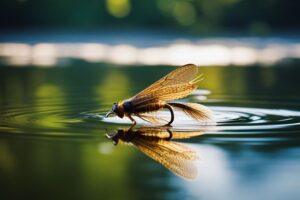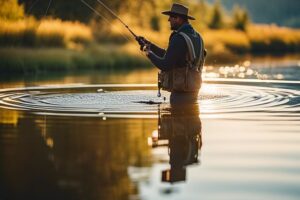There’s no denying the excitement of watching a trout rise to your dry fly, but to maximize your catch rate, mastering the art of presentation is important. In this guide, you’ll discover key techniques to present your dry flies in a way that mimics natural insect behavior, ensuring that your offerings are irresistible to fish. From selecting the right patterns to perfecting your casting technique, you’ll learn how to enhance your effectiveness on the water, making each outing more productive and enjoyable.
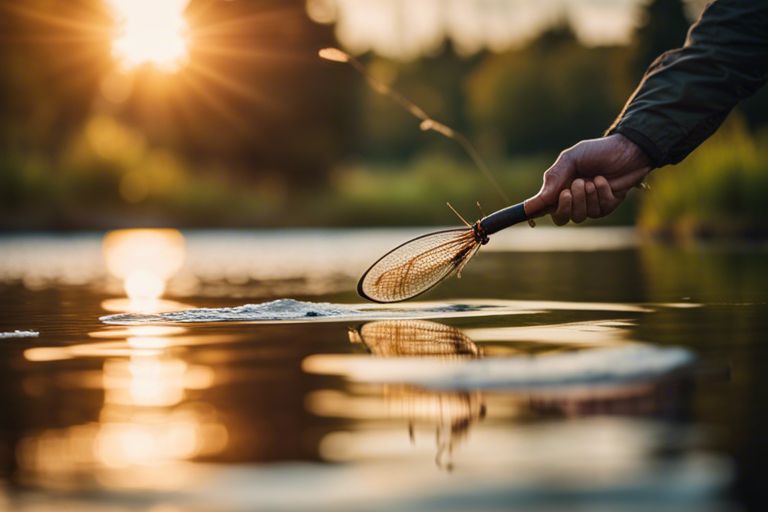
Understanding the Basics of Dry Fly Presentation
The art of dry fly presentation is crucial for maximizing your catch rate when fishing. Understanding how to present your fly so that it mimics the natural motion and appearance of insects can mean the difference between a successful day on the water and going home empty-handed. This chapter will guide you through the fundamental concepts that underpin effective dry fly fishing, enabling you to refine your technique and improve your results.
The Importance of Impeccable Fly Placement
Some anglers underestimate the significance of precise fly placement, but in reality, it plays an necessary role in how fish perceive and react to your fly. By casting your dry fly into strategic locations—such as pockets of water, seams, or under overhanging vegetation—you increase the likelihood that fish will take notice. Additionally, consider the current and wind direction; both can influence how your fly drifts and ultimately how natural it appears to the fish.
Moreover, your ability to control the drag of the fly is vital. A poorly placed fly that drags unnaturally through the water can easily spook fish, while a well-placed fly that floats naturally can entice even the most wary trout. Therefore, focus on your casting technique and be mindful of where you cast to create the best chance for an effective presentation.
The Role of Fly Size and Type in Presentation
If you want to optimize your dry fly presentation, you need to pay attention to the size and type of flies you are using. Different species and sizes of fish may prefer specific insect types at various times of the year, and matching your fly to these factors is necessary. Larger flies can attract attention from aggressive fish, while smaller, more delicate flies may be necessary for fishing in technical waters or targeting selective trout.
This understanding extends beyond just size and includes the type of dry fly you choose. For instance, uses of CDC flies or foam patterns can create different profiles on the water surface, influencing how fish react. As a general rule, it’s crucial to adapt your fly selection to the conditions you encounter and the behavior of the fish in your target area. By fine-tuning your approach to include the right size and type of dry fly, you’ll enhance your overall presentation and increase your chances of a successful catch.
Mastering the Art of Casting for Dry Fly Fishing
You may think that simply tossing your dry fly onto the water’s surface is enough to entice hungry fish, but mastering the art of casting is fundamental to optimizing your dry fly presentation. Your casting technique can greatly affect the way your fly interacts with the water, making the difference between a strike and a missed opportunity. For those looking to elevate their skills, I recommend checking out Optimizing dry fly fishing for cutthroat trout with Amplitude. This resource dives deep into techniques and gear that can enhance your overall fishing experience.
How to Achieve a Smooth, Accurate Cast
There’s an art to achieving a smooth, accurate cast that many anglers strive to perfect. One of the first steps is to ensure that your rod is at the correct angle during your backcast. Holding it too high can lead to snags in overhead branches, while too low can compromise your casting distance. Maintain a gentle yet firm wrist motion during the cast to promote a clean line release. Practice your timing by learning to let go of the line at the right moment, allowing your fly to land softly on the water, mimicking the natural descent of an insect.
Another key aspect is controlling your line speed. High line velocity can create a disturbing splash when your fly lands, which may alert the fish to danger. Aim for a gradual acceleration in your casting motion, allowing your leader and tippet to delicately present the fly. With practice, you’ll find yourself making more precise casts that create minimal disturbance on the water’s surface.
Tips for Casting in Tight Spaces and Windy Conditions
For those occasions when you’re faced with tight spaces or windy conditions, your casting technique needs to adapt accordingly. In areas where overhanging branches or bushes dominate, a low-profile cast can prove extremely beneficial. Consider utilizing a roll cast or a sidearm cast to maintain accuracy while avoiding obstacles. Moreover, when casting against the wind, aim to shorten your backcast to prevent the wind from catching your line and snapping it back. Your target should be a flat trajectory that minimizes wind resistance.
- Use a much shorter line to mitigate the impact of wind.
- Practice your accuracy to ensure a focused cast in constrained areas.
- This will help you maximize your chances of catching fish even in challenging environments.
It’s also imperative to remain aware of your surroundings when casting under challenging conditions. Adjust your positioning to back away from trees and other potential snags, and use your body to shield your line from the wind. By defining your casting range and practicing directional casting, you can significantly improve your success rate while dry fly fishing.
- Employ a double haul technique for extra line speed during windy conditions.
- Stay adaptable and open to changing your approach based on the situation at hand.
- This adaptability will greatly enhance your overall fishing experience.
The Importance of Mending Line for a Natural Presentation
Windy conditions often cause your line to drag or behave unpredictably, which can be detrimental to achieving a natural presentation. Wind will usually create unwanted tension in your line, pulling your fly unnaturally and alerting fish to its presence. To counter this, you must learn to mend your line effectively. This entails repositioning the line on the water’s surface to maintain a drag-free drift while keeping an eye on your fly to catch any subtle strikes.
A crucial and often overlooked aspect of line management is recognizing the distinct requires of different fishing situations. While some conditions necessitate quick, sharp mends, others may require a more gradual approach. Paying attention to your surroundings, such as current flow and the behavior of the fish, will help you decide when and how to mend effectively.
Factors Affecting Dry Fly Presentation
After understanding the vital aspects of dry fly fishing, it’s crucial to recognize that several factors can significantly impact your dry fly presentation. Mastering these elements will enhance your chances of enticing fish and increasing your catch rate. Here are some of the key factors you should consider:
- Water Conditions
- Light and Shadow
- Wind Effects
Perceiving how these factors interact with your techniques can lead to an optimized fishing experience. For more comprehensive tips, you can also check out Improving Dry Fly Presentation.
Water Conditions: How Current, Depth, and Temperature Impact Presentation
An understanding of water conditions is fundamental for effective dry fly fishing. Factors such as current speed, water depth, and temperature can alter how fish perceive your fly and affect their willingness to strike. The table below summarizes these key aspects:
Water Conditions Overview
| Factor | Impact |
|---|---|
| Current Speed | Faster currents can necessitate heavier flies to maintain presentation and decrease drag. |
| Depth | Shallower waters may require a more subtle presentation, while deeper waters often tolerate faster retrieves. |
| Temperature | Fish are more active in warmer water, increasing the likelihood of taking dry flies, but may necessitate lighter or more delicate presentations on hot days. |
Light and Shadow: How to Use Them to Your Advantage
To maximize your dry fly presentation, effectively utilizing light and shadow can play a crucial role. Understanding the sun’s position and how shadows fall on the water allows you to position your casts for greater success. Fish often feel more secure in shaded areas, making these spots ideal for targeting with your dry flies.
Presentation becomes vital when incorporating shadows into your approach. Shadows created by overhead cover can provide fish with a sense of security, prompting them to rise for your dry fly. Additionally, experimenting with casting angles can help you find the perfect balance that entices fish without causing alarm.
Understanding the Role of Wind in Dry Fly Presentation
Advantage can be gained by understanding how wind conditions affect your overall dry fly presentation. Wind can create surface disturbances that may mask your fly, making it seem more natural to fish. Conversely, excessive wind can cause drag, making your presentation less effective. Thus, adapting your technique depending on wind strength is crucial for success.
This means adjusting your cast, adding weight to your leader, or even changing your fly choice to maintain a natural drift. You should also pay attention to the ripple effect created by the wind, as it may help imitate the natural movement of insects on the water surface.
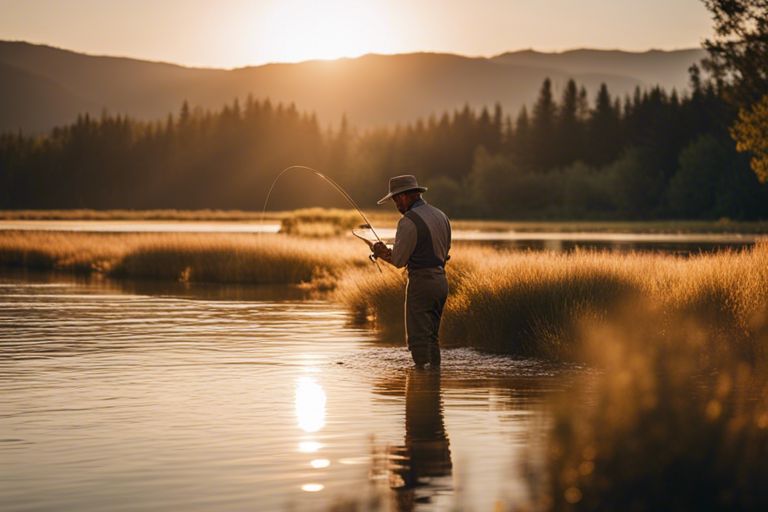
How to Read the Water for Optimal Dry Fly Presentation
Many anglers overlook the significance of reading the water when it comes to optimizing their dry fly presentation. It’s imperative to analyze different water features and their movement patterns to ensure you’re targeting fish effectively. By understanding how water flows, you can identify areas where fish are more likely to hold and feed. Pay special attention to variations in current speed and depth, as these factors greatly influence the behavior of both the insects and the fish that are feeding on them.
Identifying Prime Fishing Spots and Structures
Prime fishing spots often include structures such as rocks, fallen trees, and vegetation that provide cover and ambush points for fish. These areas typically create eddies and slow-moving sections in the water where fish can conserve energy while waiting for food to drift by. When scouting for your next fishing location, look for these physical features, as they can significantly increase your chances of a successful catch.
Additionally, consider the water’s depth and flow features. Tailouts, riffles, and pools can all attract fish, especially where the current slows down, allowing insects to land. If you can spot signs of rising fish in these areas, you’re in for a good day of fishing. Features that break the surface film or create turbulence can also indicate ideal spots for presenting your dry fly attractively.
Understanding Fish Behavior and Habitat Preferences
With every type of fish comes a distinct set of behavioral patterns and habitat preferences. Understanding these helps you become more effective in your presentations. Different species will seek out different environments based on factors like water temperature, depth, and availability of food sources. For instance, trout often prefer cooler waters with ample cover to hide from predators, while bass may favor warmer, shallow areas with abundant vegetation.
Habitat also plays a crucial role in determining where and when fish feed. Fish are opportunistic feeders and may rise to the surface for insects based on the time of day and weather conditions. If you observe a hatch of insects, it’s best to match your dry fly to the prevalent species. Always take a moment to consider the local aquatic life and the role it plays in the feeding behavior of the fish you’re targeting.
Tips for Reading the Water in Different Environments
Some environments present unique challenges for reading the water effectively. In lakes, for instance, you might be looking for subtle disturbances from rising fish or insects, while in rivers, you’ll want to pay attention to the current. Look for signs like surface disturbances, swirls, and bubbles, which can indicate the presence of fish or the movement of food through the water column. Additionally, remember to evaluate the wind direction, which can affect how your dry fly drifts. Using visual cues to inform your strategy can significantly increase your overall catch rate.
- Always observe the water for moving currents and variances in surface tension.
- Identify areas where water meets structure or depth changes to find active fish.
- Be mindful of insect hatches and adjust your fly selection accordingly.
Assume that by carefully analyzing these factors, you can maximize your chances of successfully presenting your dry fly in optimal conditions.
Water conditions can vary significantly across environments, whether you’re fishing in rivers, streams, lakes, or poundage systems. Each water body has its own unique characteristics that influence how you should read it. In fast-flowing streams, look for pockets of slower water where fish might rest, while in lakes, consider the drop-offs and underwater structures as key areas where fish may congregate. Keeping an eye on the weather patterns and water levels can also help you understand how to best approach your fishing strategy.
- Keep a journal of conditions you encounter to improve your ability to predict fish behavior.
- Observe the interactions between different elements—water, air, and land—to get a comprehensive picture.
- Adjust your methods based on the type of water you’re in to remain adaptable.
Assume that your adaptability will be your greatest asset when navigating different environments while trying to read the water effectively.
Advanced Techniques for Dry Fly Presentation
Once again, elevating your presentation of dry flies can significantly enhance your catch rate when targeting wary trout. Understanding and applying advanced techniques will help you mimic the natural behavior of insects more effectively, making your fly irresistible to fish. Below, you’ll find a comprehensive guide to refine your skills:
- The Dead Drift: How to Make Your Fly Look Like a Real Insect
- The Drag-Free Drift: Techniques for a Natural Presentation
- How to Use the “Hinge” Method for Increased Success
Advanced Techniques Overview
| Technique | Description |
|---|---|
| The Dead Drift | A technique to ensure your fly moves in a straight line, simulating an insect floating on the surface. |
| The Drag-Free Drift | Eliminating drag to make your fly appear more natural in the water. |
| The “Hinge” Method | Utilizing a strategic casting approach that helps control the fly’s movement. |
The Dead Drift: How to Make Your Fly Look Like a Real Insect
With the dead drift technique, you aim to present your fly in a way that it mimics the natural drift of a real insect on the water’s surface. This involves careful line management and the use of various tools, such as indicators or yarn, to ensure that your fly floats along with the flow of the current. You should aim to make your cast upstream and let the fly drift down naturally, keeping tension in the line to detect any strikes. The key is to minimize any disturbance that may alert the fish to your presence.
By mastering the dead drift, you can increase your chances of presenting a lifelike imitation. Remember to observe how real insects behave on the water and adjust your technique accordingly. Pay attention to factors such as wind, current, and wave patterns, which can all influence your fly’s behavior and presentation.
The Drag-Free Drift: Techniques for a Natural Presentation
Dead flies and insects are more likely to be caught by fish during a drag-free drift; hence, your goal should be to eliminate any drag that could move your fly unnaturally. Achieving this requires you to be strategic about your casting techniques. Focus on the positioning of your fly line and leader, ensuring they do not disrupt the natural flow. Utilize mends in your line to adjust its position with the current and maintain a smooth drift.
In order to maintain a drag-free presentation, it is imperative to control the tension in your line as you observe the drift. Regularly assess the line position and performance, making adjustments as necessary to allow the fly to float unobstructed. Understanding and mastering this technique is crucial for increasing your catch rate.
For instance, consider how slight mends in your line can help keep your fly moving freely without any interference from the currents. Practicing this technique will allow you to observe the fly’s movements closely and can lead to remarkable success when fishing in rivers or streams.
How to Use the “Hinge” Method for Increased Success
Drift control is critical, and the “hinge” method offers a unique approach to maintaining the proper presentation of your dry fly. This technique involves creating a pivotal point in your line, which helps manage the fly’s movement across the water surface better. You can achieve this by casting at an angle that allows your line to form a slight curve or “hinge” as it is affected by the current. This method will help keep your fly in the strike zone longer and replicate the movement of insects effectively.
As you practice the hinge method, pay attention to the nuances in waterflow and the behavior of fish. Recognizing how the currents interact with your line is vital, and will greatly enhance your ability to present a fly that looks as natural as possible. Over time, you will not only become more proficient in this technique but will also see an improvement in your overall catch rate.
The key to effectively using the “hinge” method is practice and observation. The more you fish and experiment with different angles and currents, the more adept you will become at managing your fly’s presentation naturally. This strategy can set you apart as an angler and lead to more successful outings on the water.
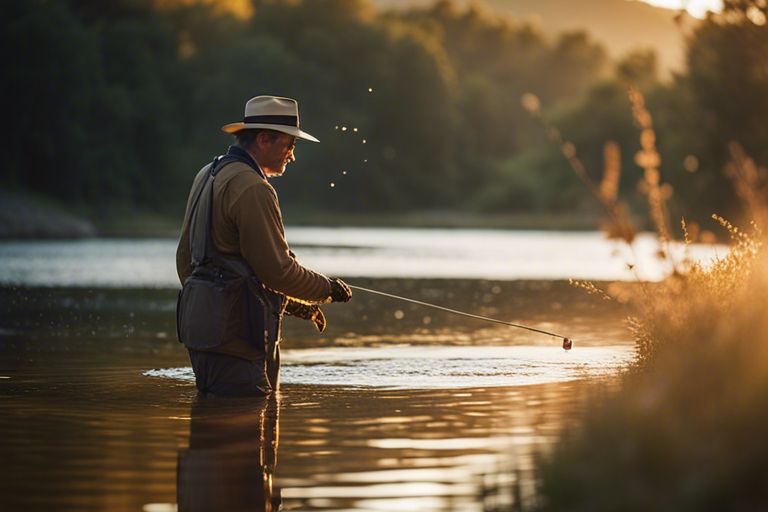
Common Mistakes to Avoid in Dry Fly Presentation
Over-Casting and the Importance of Patience
For many anglers, the excitement of fishing can lead to over-casting, where you throw your line too far or too frequently. Clearly, this mistake can spook fish and reduce your chances of a successful catch. A slower, more deliberate presentation often proves more effective, as it allows the fish time to recognize and respond to your fly. Instead of rapid casting, take a moment to observe the water, identify the target areas where fish are lurking, and place your fly gently to entice them without alarming them.
Moreover, patience is key when presenting dry flies. You must give the fish the opportunity to take notice of your offering. It might require you to wait a moment after each cast to observe the water’s surface for any signs of feeding fish. By maintaining a calm demeanor and exercising patience in your presentation, you increase the odds of drawing fish in, ultimately leading to a more rewarding day on the water.
How to Avoid Spooking Fish with Your Presentation
Your presentation is critical in ensuring that you don’t inadvertently scare away potential catches. The way you approach the water, your casting technique, and even your movements on the bank can have a significant impact on your success. Start by selecting a cast that minimizes disturbance, such as a roll cast or a sidearm cast, which keeps your line low to the water. This reduces the likelihood of your line landing harshly and causing ripples that can alert fish to your presence.
The key is to remain as stealthy as possible. Position yourself at a distance and minimize your shadow on the water. Use natural cover and avoid sudden movements or loud noises that could startle fish. Pay close attention to how the fish behave; if they are rising steadily, it indicates a feeding frenzy, and your dry fly can fit right in. Conversely, if the fish are skittish, you’ll need to adjust your technique significantly.
Tips for Managing Line and Leader for a Stealthy Approach
Presentation is crucial for effectively managing your line and leader when fishing with dry flies. Keeping both elements neat and manageable ensures that your fly lands softly, providing a more realistic presentation to the fish. Avoid unnecessary tangles and ensure that your line does not drag; this can signal danger to fish below. Instead, focus on keeping your line straight and allowing slack as needed to enable a natural drift. Here are a few tips for managing your line and leader:
- Choose a light tippet to reduce visibility underwater.
- Keep your leader long enough to maintain a good distance from the fish.
- Practice your casting technique to minimize splashdown.
This attention to detail will enhance your overall effectiveness and keep fish intrigued by your offering.
Line management is equally important when trying to achieve a stealthy approach. By minimizing the amount of slack in your system, you can react more quickly when a fish takes the bait. Keeping a low profile while casting further preserves the naturalness of your presentation. Furthermore, consider using a floating line with a long leader to help your dry flies stay on top of the water. Here are some additional suggestions:
- Use a drag-free drift technique to avoid unnatural movements.
- Modify your casting angle based on wind direction to control the fly’s presentation.
- Be aware of your shadow and ensure you’re not casting over sensitive areas.
This approach will not only improve your presentation but also significantly increase your chances of landing more fish on your next outing.
To wrap up
With these considerations in mind, optimizing your dry fly presentation can significantly enhance your catch rate. By paying attention to factors such as drag, drift, and the natural movement of insects, you can create a more enticing presentation that draws fish in. Remember to adjust your casting techniques to match the unique characteristics of the water you’re fishing, ensuring that your fly appears as realistic and appealing as possible. Whether you are using a dead drift approach or imparting subtle twitches, the goal is to make your fly mimic the natural behavior of the insects that fish are feeding on.
Additionally, always remain adaptable. Observe the water and be willing to switch up your tactics as conditions change or fish display specific feeding behaviors. By experimenting with different flies, sizes, and techniques, you can discover what works best in your fishing environment. Ultimately, the more you refine your dry fly presentation, the more confident you’ll feel in your abilities, leading to greater successes on the water. Embrace the nuances of dry fly fishing and enjoy the rewarding experience it offers.
FAQ
Q: What are the key factors to consider for effective dry fly presentation?
A: To optimize your dry fly presentation, consider the following key factors:
1. **Drift**: Ensure your fly mimics the natural movement of insects on the water’s surface. Use techniques such as the “dead drift” to allow your fly to float naturally with the current.
2. **Casting Technique**: Use a gentle and accurate cast to place your fly where fish are likely to be feeding. An overhead cast can be effective, but sidearm and roll casts are useful in tight spaces or windy conditions.
3. **Line Management**: Keep your line free of drag by using techniques such as mending and adjusting the tension on your line. This helps maintain a natural presentation and increases your chances of attracting fish.
Q: How can environmental conditions affect dry fly presentation?
A: Environmental conditions play a crucial role in dry fly fishing. Factors such as wind, water clarity, and light conditions can impact your presentation:
1. **Wind**: A strong wind can create drag on your line and affect the drift of your fly. In windy conditions, consider using shorter casts and heavier flies to maintain control.
2. **Water Clarity**: In clear water, fish are more likely to be selective. Use fine tippets and smaller flies for a more realistic presentation. In murky waters, brighter or larger patterns may be more effective as they can create silhouettes.
3. **Light Conditions**: The time of day can affect insect activity. Early mornings and late evenings often see more surface activity. Adjust your fly choice and presentation technique based on the time of day and the level of light in order to maximize your chances of a catch.
Q: What are some common mistakes to avoid when presenting dry flies?
A: Here are some common mistakes that anglers make that can hinder effective dry fly presentation:
1. **Poor Timing**: Striking too soon can pull the fly away from the fish before they have a chance to take it. Be patient and wait until you feel a solid pull before setting the hook.
2. **Using the Wrong Fly Size or Pattern**: Matching the hatch is important. Failing to use the right fly size, shape, or color can result in diminished interest from fish. Observe the insects present and adapt your fly choice accordingly.
3. **Inattention to Water Surface**: Casting without observing the water surface can lead to missed opportunities. Pay close attention to rising fish, as they can provide clues to what insects are active. Adjust your presentation to target these specific feeding fish.

